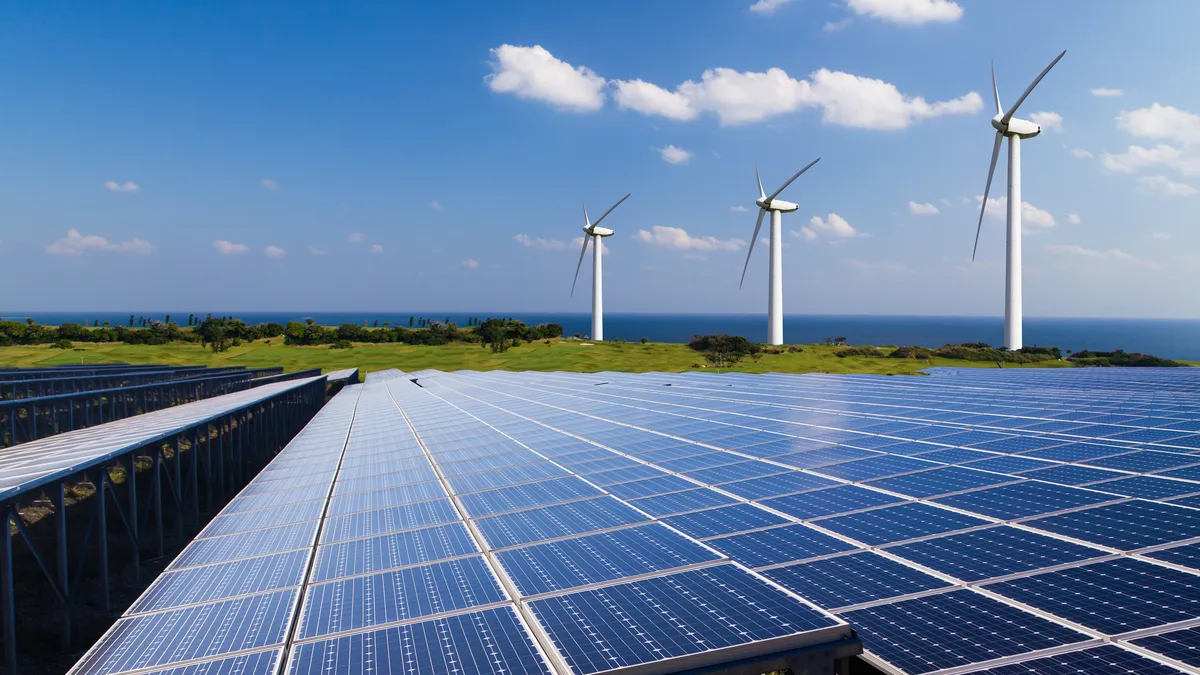Dive Brief:
- PacifiCorp plans to increase its current solar and wind portfolio by nearly four times, to roughly 20,000 MW by 2032, and achieve 7,400 MW of energy storage by 2029, the utility announced in an integrated resource plan filed with the regulators of six states last week.
- The plan, which also includes a focus on customer-side resources like demand response and energy efficiency efforts, is expected to reduce greenhouse gas emissions on PacifiCorp’s system by 70% from 2005 levels at the end of the decade, and 100% by 2050.
- The company is also focusing on advanced nuclear technology. Its 2021 plan included an advanced nuclear reactor project in Kemmerer, Wyoming, and this one has two more advanced nuclear facilities that PacifiCorp says could be located near thermal coal plants in Utah.
Dive Insight:
PacifiCorp serves roughly 2 million customers across six states in the U.S., with a service territory that extends from eastern Wyoming to the Pacific Coast in Oregon. As a result, the utility has a large, spread-out system, with a lot of transmission, that is very dependent on coal, said Fred Heutte, senior policy associate with the NW Energy Coalition.
The plan filed by the utility last week expects to nearly quadruple its current solar and wind resources in the next decade and add a lot of energy storage to its system. In terms of customer-side resources, PacifiCorp’s 2023 plan looks to deliver 798 MW of energy efficiency and 661 MW of demand response between 2023 and 2026.
Like many other power providers, PacifiCorp faces challenges with scaling up renewables like supply chain issues, Heutte said. However, the utility has been thorough in setting timelines, executing contracts and managing the development of new resources and transmission, he added.
“One of the things about PacifiCorp is they have shown the ability to achieve their procurement goals,” he said.
One concern that the NW Energy Coalition has about the plan, however, is its inclusion of advanced nuclear technologies. PacifiCorp’s 2023 preferred portfolio includes the 500-MW Natrium demonstration project in Wyoming that is expected to come online by 2030, and another 1,000 MW of advanced nuclear by the end of 2032. The utility said in its plan that it is working with TerraPower “to support the development of advanced nuclear reactors with integrated salt storage projects near retiring coal plants.”
“The problem is we don’t have a working example of that kind of plant, which requires advanced nuclear fuel… nobody can say how much it’s going to cost or how it’ll perform,” Heutte said. “So there’s a lot of unknowns about the nuclear and we’re pretty concerned about that,” he added.
Sierra Club also raised concerns about nuclear technologies in the resource plan.
“PacifiCorp would like us to believe it is committed to decarbonization, but the pivot to nuclear demonstrates that it’s more unprepared than we could’ve imagined – banking on a costly, unproven, wish and a prayer that won’t meet the immediate steps outlined in the Intergovernmental Panel on Climate Change (IPCC) report released earlier this week to make meaningful progress towards carbon pollution reduction,” Amelia Myers, regional campaign director for the organization’s Intermountain West Beyond Coal Campaign, said in an emailed statement.
The Natrium demonstration project is being funded through a precedent-setting, public-private partnership through the U.S. Department of Energy’s Advanced Reactor Demonstration Program and TerraPower, PacifiCorp spokesperson David Eskelsen said in an email. TerraPower will be responsible for securing the private investment and managing the proposed project and PacifiCorp will seek regulatory approvals to acquire the demonstration project once the plant is built and operational.
“The operating attributes for this resource, specifically the energy storage and inherent safety features associated with a sodium-cooled reactor are attractive and needed in a world that is transitioning to more non-carbon and renewable resources,” Eskelsen said.
PacifiCorp expects to finalize commercial agreements for the Natrium project by the end of 2023.















